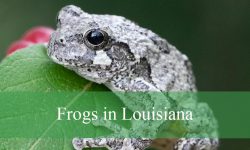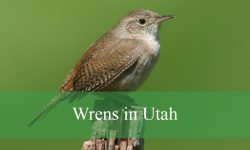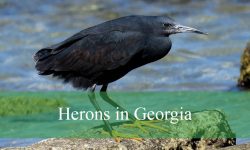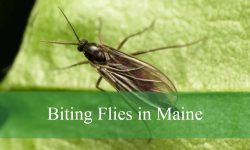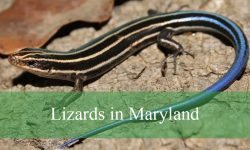Accurate identification of bed bugs is essential if you want to stop their spread. Because of their small size and similar look, bed bugs are frequently confused with a variety of other insect species. Their bodies are around the size of an apple seed, and they are usually reddish-brown in appearance with no obvious body segmentation.
Even though some insects resemble bed bugs, a closer look reveals some distinct differences. Below is a list of 15 different bug species that are sometimes confused for bed bugs.
These species can be distinguished from one another by their distinctive characteristics. Effective pest control and prevention techniques can benefit from an understanding of these distinctions.
Different Types of Bugs that Look like Bed Bugs
Swallow Bugs
Swallow bugs (Oeciacus vicarius), often mistaken for bed bugs (Cimex lectularius), have distinct differences. They are smaller, with adult swallow bugs measuring 3–4 mm compared to bed bugs. Swallow bugs have long, pale hairs covering their bodies, and the 3rd and 4th antennae segments are equal in length. They primarily live with bird species such as swallows, pigeons, swifts, and chickens, only developing and reproducing on swallows. Swallow bugs may enter homes in late summer or early fall when swallows migrate. The first step in addressing a swallow bug infestation is to remove bird nests from the property.
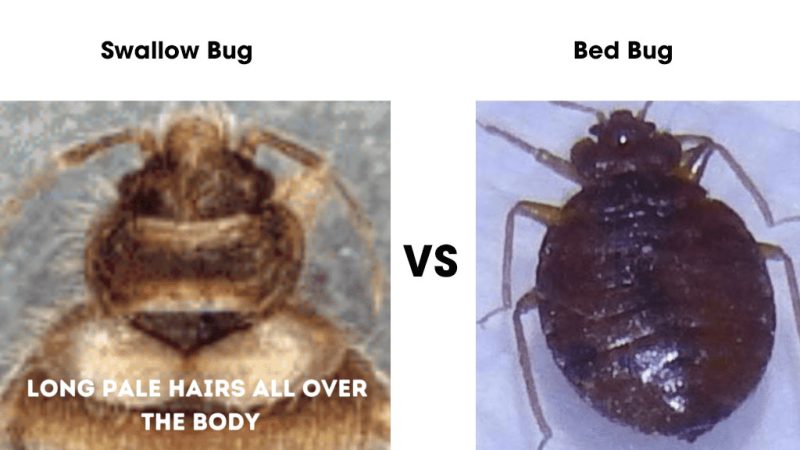
Characteristic |
Oeciacus vicarius (Swallow Bug) |
Cimex lectularius (Bed Bug) |
|---|---|---|
Size |
3–4 mm |
5–7 mm |
Color |
Greyish and amber with pale hairs |
Reddish-brown to dark brown |
Habitat |
Lives with birds like swallows, pigeons, swifts, and chickens |
Lives near human sleeping areas |
Behavior |
Enters homes in late summer/fall; seeks blood meals before birds return |
Stays near humans |
Pronotum Hairs |
Long pale hairs |
Shorter hairs |
Antennae Segments |
3rd and 4th segments are equal in length |
Not equal in length |
Pronotum Shape |
Less concave front margin |
More concave front margin |
Pirate Bugs
Pirate bugs (nymphs), often mistaken for bed bugs, belong to the anthocoroid family within the superfamily Cimicoidea, which includes bed bugs, bat bugs, and other similar insects. Pirate bugs are beneficial predators, hunting mites, thrips, aphids, and whiteflies, unlike bed bugs, which are parasitic blood feeders. Pirate bug nymphs are much smaller than bed bug nymphs, measuring 0.2 – 0.48 mm compared to 1.5 – 2 mm. They are translucent and light amber in color. While bed bugs can live up to a year, pirate bugs have a shorter lifespan of about 35 days.
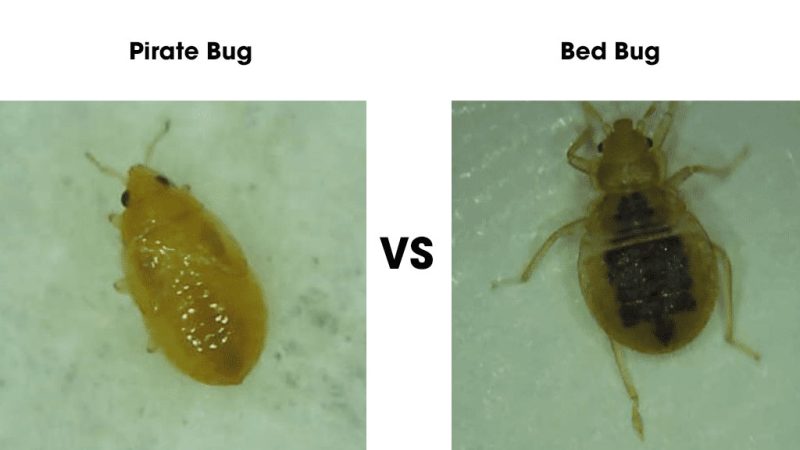
Characteristic |
Minute Pirate Bug (Nymph) |
Cimex lectularius (Bed Bug) |
|---|---|---|
Size |
0.2 – 0.48 mm (nymph), 2–5 mm (adult) |
1.5 – 2 mm (nymph), 5 – 7 mm (adult) |
Color |
Translucent and light amber |
Reddish-brown to dark brown |
Habitat |
Lives on plants, hunts other bugs |
Lives near human sleeping areas |
Behavior |
Beneficial predators hunts mites, thrips, aphids, and whiteflies |
Strictly parasitic blood feeder |
Lifespan |
Approximately 35 days (adult) |
Up to 1 year (or longer) |
German Cockroach Nymph
German cockroach nymphs are commonly mistaken for bed bugs due to their similar size and appearance. These nymphs are about 1/2 inch long (3–14 mm) and light brown. Unlike adult German cockroaches, nymphs have two prongs on their backend. They have a hard shell, unlike bed bugs, which lack this feature. Cockroach nymphs molt up to six times before becoming adults. While bed bugs solely feed on blood, cockroach nymphs are scavengers, consuming a variety of organic matter. Identifying the two prongs on the backend can help distinguish cockroach nymphs from bed bugs.
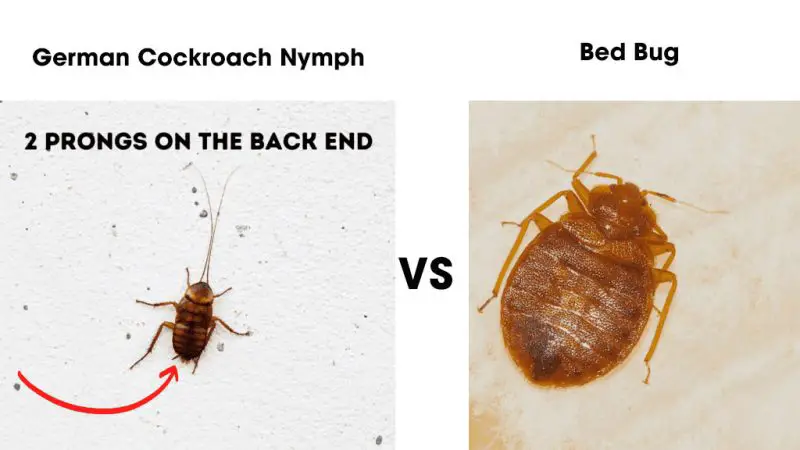
Characteristic |
German Cockroach Nymph |
Cimex lectularius (Bed Bug) |
|---|---|---|
Size |
3 mm – 14 mm |
1.5 mm – 6 mm |
Color |
Amber to dark brown to black |
Reddish-brown to dark brown |
Shell |
Hard shell |
No shell |
Prongs |
Two prongs on the backend |
No prongs |
Feeding Behavior |
Scavenger, eats various organic matter |
Parasitic, feeds on blood |
Health Risk |
Yes |
No |
Tropical bed bug
Cimex hemipterus (tropical bed bug) and Cimex lectularius (common bed bug) both belong to the genus Cimex, but there are differences in geographical distribution and some morphological characteristics. C. lectularius is widely distributed worldwide, while C. hemipterus mainly appears in tropical regions. Both species infest areas near humans, such as bed frames, mattresses, and furniture. The treatment for both species is quite similar, but C. hemipterus is becoming more resistant to pesticides.
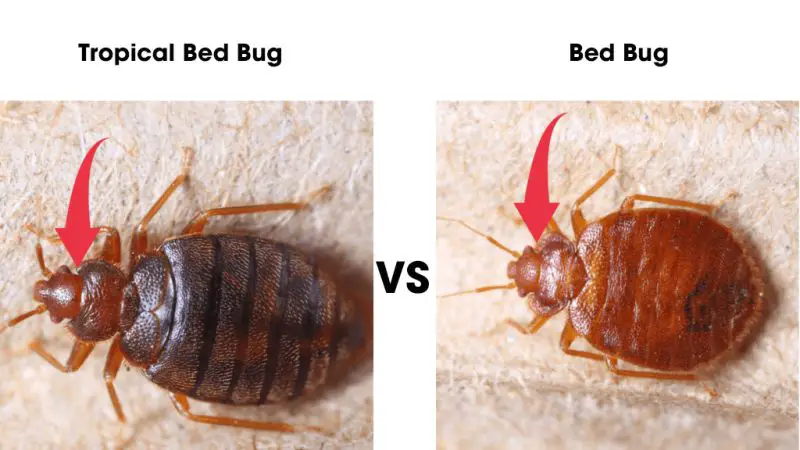
Characteristic |
C. hemipterus (Tropical Bed Bug) |
C. lectularius (Common Bed Bug) |
|---|---|---|
Size |
5–7 mm |
Similar |
Color |
Reddish-brown to bright red to dark blackish-brown |
Similar |
Morphological Features |
Narrower neck area, no deep excavation on the neck, pad at the base of tarsi, more setae on legs |
Broader neck area, deep excavation on the neck |
Ability to Grip Smooth Surfaces |
Better due to fossula spongiosa |
Worse |
Geographical Distribution |
Tropical regions |
Worldwide |
Pesticide Resistance |
Becoming more resistant |
Less resistant |
Bat Bugs
Bat bugs (Cimex adjunctus) are often mistaken for bed bugs (Cimex lectularius) due to their similar appearance. While bat bugs primarily live with bats and feed on their blood, they may enter homes if bats leave their roosts, seeking blood from humans and other warm-blooded animals. Unlike bed bugs, bat bugs typically attempt to return to bat roosts rather than stay near humans. Notably, bat bugs have longer setae (hairs) on the edge of the pronotum compared to the diameter of their eyes. These hairs, along with slightly wider back legs, help distinguish them from bed bugs.
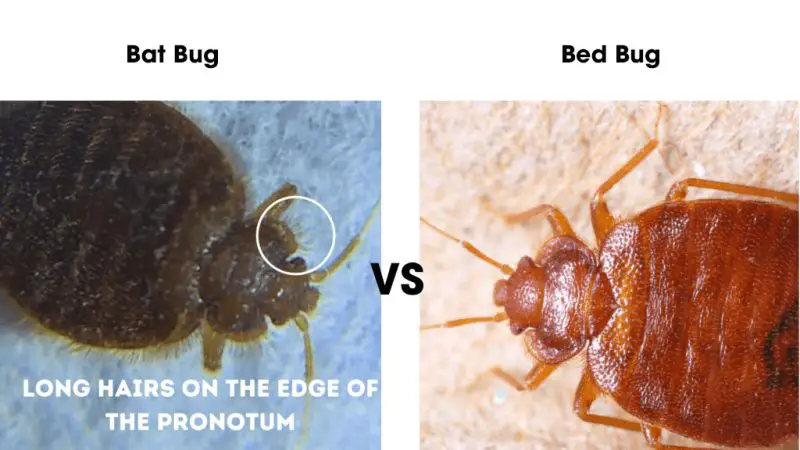
Characteristic |
Cimex adjunctus (Bat Bug) |
Cimex lectularius (Bed Bug) |
|---|---|---|
Size |
5.5 mm–6 mm |
Similar |
Color |
Red, dark brown, to dark red |
Reddish-brown to dark brown |
Habitat |
Lives with bats, may enter homes |
Lives near human sleeping areas |
Behavior |
Tries to return to bat roosts |
Stays near humans |
Pronotum Hairs |
Longer than the diameter of the eye |
Shorter than the diameter of the eye |
Legs |
Slightly wider back legs |
Narrower back legs |
Booklice
Booklice (psocids) are small insects, often mistaken for bed bug nymphs due to their similar size and color under certain lighting conditions. Booklice measure about 1 mm, while stage 1 bed bug nymphs are slightly larger at 1.5 mm, quickly growing to 2 mm. Booklice feed on mold, paper, and books, thriving in damp environments. Reducing humidity and cleaning mold can help control booklice infestations. Unlike bed bugs, which are parasitic blood feeders, booklice are harmless and do not pose health risks.
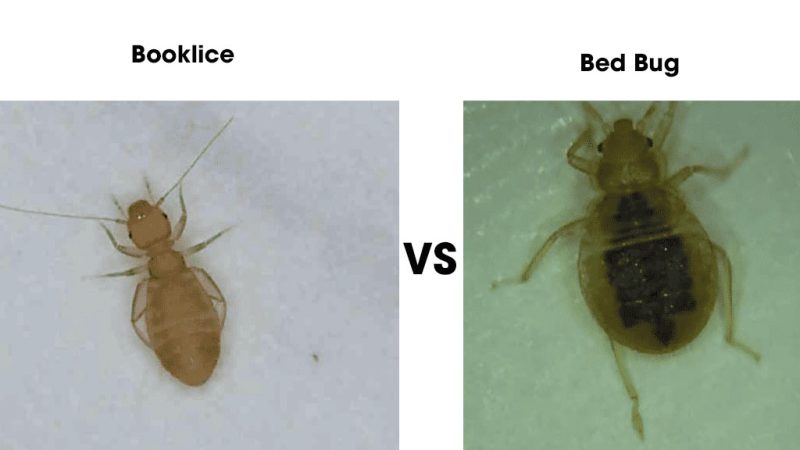
Characteristic |
Booklouse |
Cimex lectularius (Bed Bug) |
|---|---|---|
Size |
1 mm |
1.5 mm – 6 mm |
Color |
Translucent, whitish to light grey to light brown |
Reddish-brown to dark brown |
Habitat |
Damp locations with mold |
Near human sleeping areas |
Feeding Behavior |
Feeds on mold, paper, and books |
Parasitic, feeds on blood |
Health Risk |
No |
Yes |
Flour Beetles
Flour beetles are often mistaken for bed bugs due to their similar appearance to the untrained eye. These beetles, such as the confused flour beetle and red flour beetle, are about 3–4 mm in size and reddish-brown in color. Unlike bed bugs, flour beetles do not infest beds or furniture but thrive on moisture and grains found in kitchens. If you spot tiny bugs that aren’t bed bugs in your home, they may be flour beetles. They feed on flour, meal, grains, and nuts, whereas bed bugs feed exclusively on blood. Cleaning out kitchen storage areas can help manage flour beetle infestations.
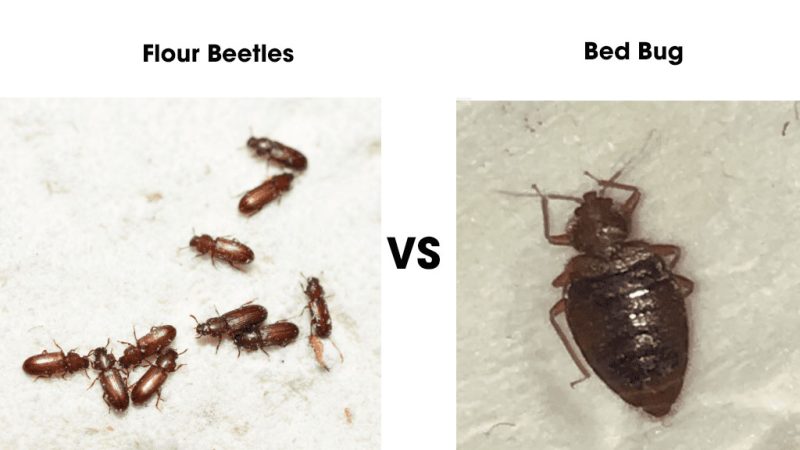
Characteristic |
Flour Beetle |
Cimex lectularius (Bed Bug) |
|---|---|---|
Size |
3 mm – 4 mm |
1.5 mm – 6 mm |
Color |
Reddish-brown |
Reddish-brown to dark brown |
Habitat |
Kitchen storage, grains |
Near human sleeping areas |
Feeding Behavior |
Feeds on flour, meal, grains, and nuts |
Parasitic, feeds on blood |
Infestation Location |
Kitchen storage |
Beds, furniture |
Spider Beetles
Spider beetles are often mistaken for bed bugs due to their round red bodies, which resemble bed bugs to the untrained eye. Unlike bed bugs, spider beetles do not bite humans and are more of a nuisance pest. They are scavengers and will feed on a wide range of food sources, including figs, almonds, berries, cereal, wheat, paper, and plants. Finding spider beetles in your home indicates a need to clean out cupboards and seal food items properly. They are generally harmless but can be bothersome.
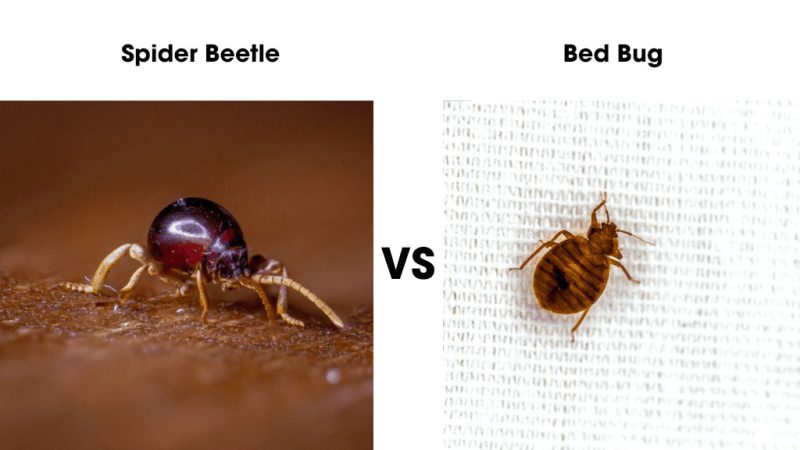
Characteristic |
Spider Beetle |
Cimex lectularius (Bed Bug) |
|---|---|---|
Size |
1.5 mm – 3.5 mm |
1.5 mm – 6 mm |
Color |
Red |
Reddish-brown to dark brown |
Habitat |
Food storage areas, plants |
Near human sleeping areas |
Feeding Behavior |
Scavenger, feeds on various food sources |
Parasitic, feeds on blood |
Bite Risk |
Does not bite humans |
Bites humans |
Carpet Beetle
Carpet beetles are often mistaken for bed bugs due to their presence near mattresses and box springs. Unlike bed bugs, carpet beetles do not feed on blood but rather on fabrics, stored food products, and carpets. They are common pests in urban environments and can cause allergic reactions in some people due to their larvae’s hairs. Regular vacuuming around bed frames and mattresses helps prevent carpet beetle infestations.
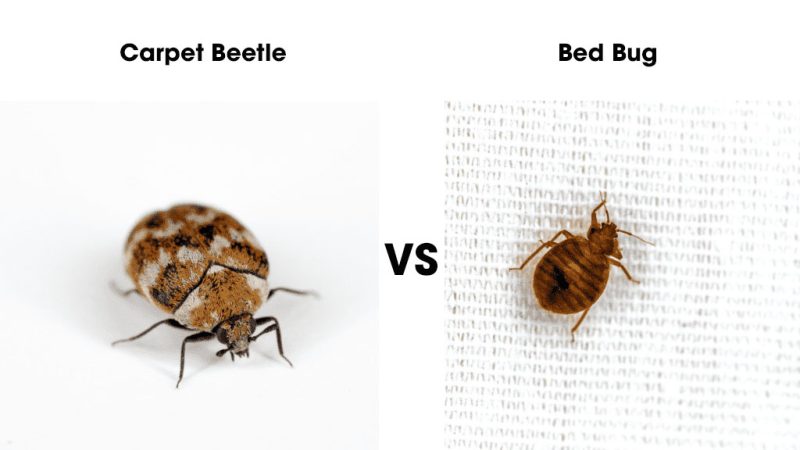
Characteristic |
Carpet Beetle |
Cimex lectularius (Bed Bug) |
|---|---|---|
Size |
1/10 inch (various carpet beetle) to 1/8 – 3/16 inches |
1.5 mm – 6 mm |
Color |
Black/brown/variegated |
Reddish-brown to dark brown |
Habitat |
Fabrics, stored food, carpets |
Near human sleeping areas |
Feeding Behavior |
Feeds on fabrics, stored food |
Parasitic, feeds on blood |
Life Cycle |
Egg, larvae, pupae, adult |
Egg, nymph, adult |
Wings |
Adult beetles have wings |
Adults do not have wings |
Bird Mites
Bird mites are parasitic mites that primarily feed on avian blood, distinguishing them from bed bugs, which feed on human and other mammalian blood. These tiny pests are usually associated with bird nests and can infest homes if birds abandon their nests. Unlike bed bugs, bird mites cannot complete their life cycle on human blood alone and do not typically survive away from birds or their nests.
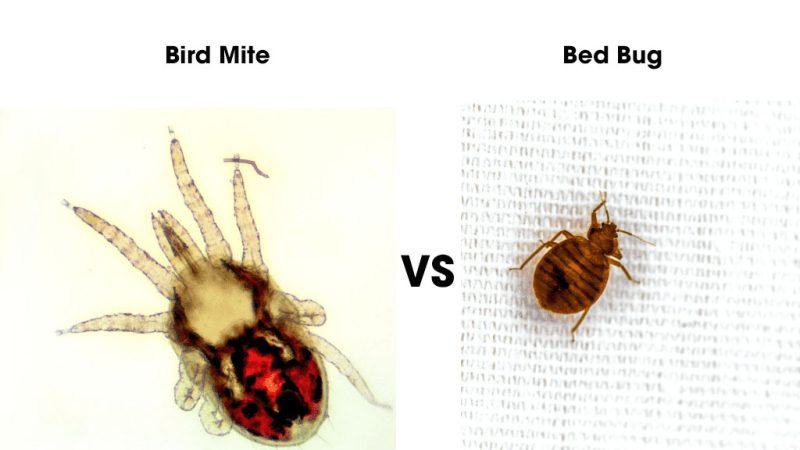
Characteristic |
Bird Mites |
Cimex lectularius (Bed Bug) |
|---|---|---|
Size |
1/32 inch or less than 1mm |
1.5 mm – 6 mm |
Color |
Amber, reddish, and greyish |
Reddish-brown to dark brown |
Habitat |
Bird nests, associated with birds |
Human sleeping areas |
Feeding Behavior |
Feeds on avian blood |
Feeds on human and animal blood |
Life Cycle |
Egg, larva, nymph, adult |
Egg, nymph, adult |
Legs |
8 legs |
6 legs |
Ticks
Ticks, belonging to the order Parasitiformes, are arachnids distinct from bed bugs in their feeding habits and disease transmission potential. These blood-sucking ectoparasites are notorious for transmitting diseases such as Lyme disease and Rocky Mountain spotted fever. They latch onto their hosts by cutting the skin and inserting a feeding tube, remaining attached for hours to days. Unlike bed bugs, ticks are vectors of various pathogens, making them a significant health concern in regions where they are prevalent.
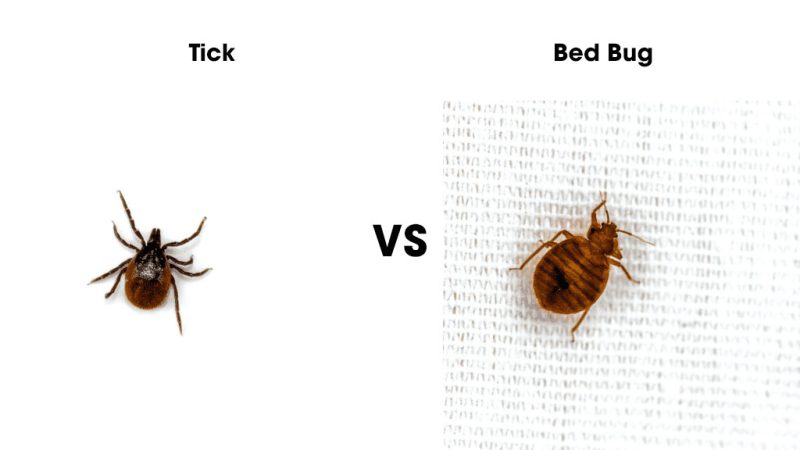
Characteristic |
Ticks |
Cimex lectularius (Bed Bug) |
|---|---|---|
Size |
Adults: 3 to 5 mm; Nymphs: 2 mm or smaller |
1.5 mm – 6 mm |
Color |
Red, grey, and brown |
Reddish-brown to dark brown |
Legs |
8 legs |
6 legs |
Habitat |
Grass, vegetation, animals |
Human dwellings, furniture |
Feeding Behavior |
Attaches to host, feeds for hours to days |
Feeds and returns to harborage |
Diseases |
Lyme disease, Rocky Mountain spotted fever |
No known disease transmission |
Attachment |
Cuts skin, inserts feeding tube |
Pierces skin to feed briefly |
Fleas
Fleas are frequently confused with bed bugs because of their biting tendencies and the resulting skin reactions in humans. However, fleas differ significantly in their behavior and appearance. Unlike bed bugs, which primarily crawl and hide in crevices, fleas possess powerful hind legs that allow them to jump impressive distances from host to host or environment to host. Their small size, usually between 1.5 mm to 4 mm, and dark coloration aid in camouflage amidst fur or carpet fibers. Fleas also undergo a complex life cycle involving egg, larva, pupa, and adult stages, requiring specific strategies for eradication and control compared to bed bugs.
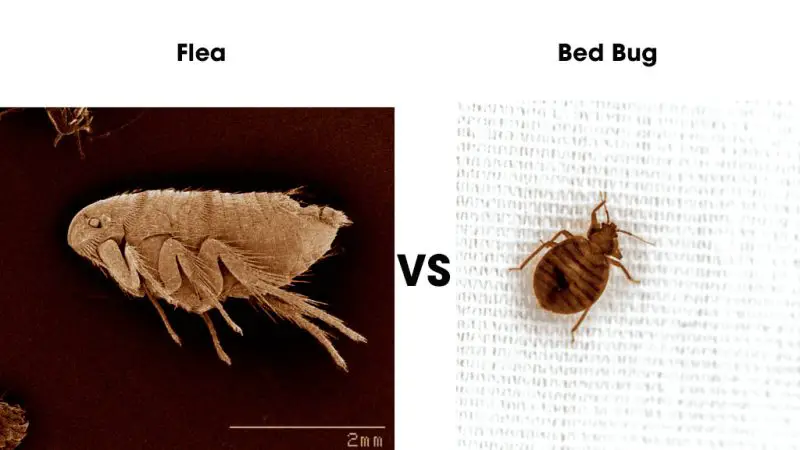
Characteristic |
Flea |
Cimex lectularius (Bed Bug) |
|---|---|---|
Size |
1.5 mm – 4 mm |
1.5 mm – 6 mm |
Color |
Black, brown, reddish-brown |
Reddish-brown to dark brown |
Lifecycle |
Egg, Larva, Pupa, Adult |
Egg, Nymph, Adult |
Behavior |
Jumps |
Crawls |
Reproduction |
Lay 20–50 eggs per day |
Lay 1–5 eggs per day |
Transmission |
Can transmit tapeworms to pets |
No known disease transmission |
Habitat |
Often on pets, carpets, and yards |
Human dwellings, furniture |
Head Lice
Head lice, unlike bed bugs, reside exclusively in human hair, laying eggs known as nits that hatch within 6–9 days. After a nymph stage lasting about a week, they mature into adults, requiring a male and female for reproduction. Bed bugs, on the other hand, do not inhabit hair due to their lack of specialized claws for gripping. They feed on blood, turning reddish-brown after a meal, but do not live on hosts. Head lice are typically 2-3 mm in size and transparent before feeding. Unlike bed bugs, head lice have claws on each leg to grasp and move along strands of hair.
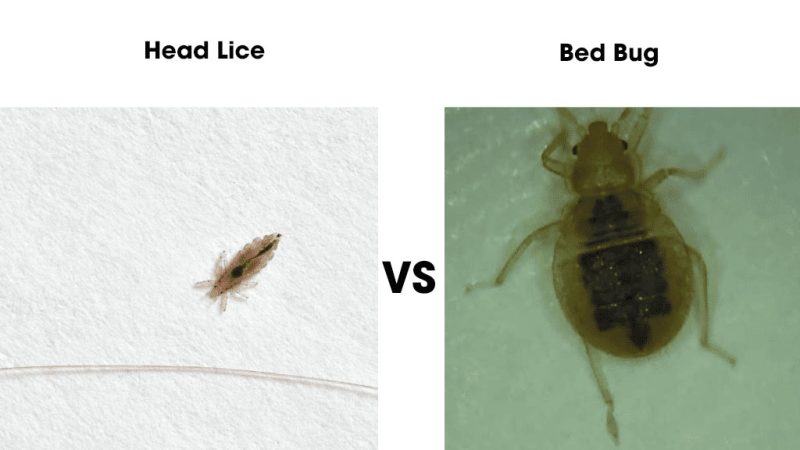
Characteristic |
Head Lice |
Bed Bug |
|---|---|---|
Habitat |
Human hair |
Beds, furniture, cracks |
Reproduction |
Need male and female for nits |
Lay eggs without mating |
Feeding |
Blood feeder |
Blood feeder |
Size |
2-3 mm |
1.5-6 mm |
Color |
Transparent, reddish-brown post-feed |
Reddish-brown |
Special Features |
Claws on legs for gripping hair |
No claws on legs |
Body Lice
Body lice reside in clothing and move onto the skin to feed. Regularly washing clothes in hot water and drying them in a hot dryer can prevent infestations. Many mistake body lice for bed bug nymphs due to similar appearances, but body lice are specific to humans and do not infest pets. They lay eggs in clothing seams near the skin, ensuring hatchlings have immediate access to blood. Eggs hatch in 6–9 days, with nymphs maturing into adults in about a week.
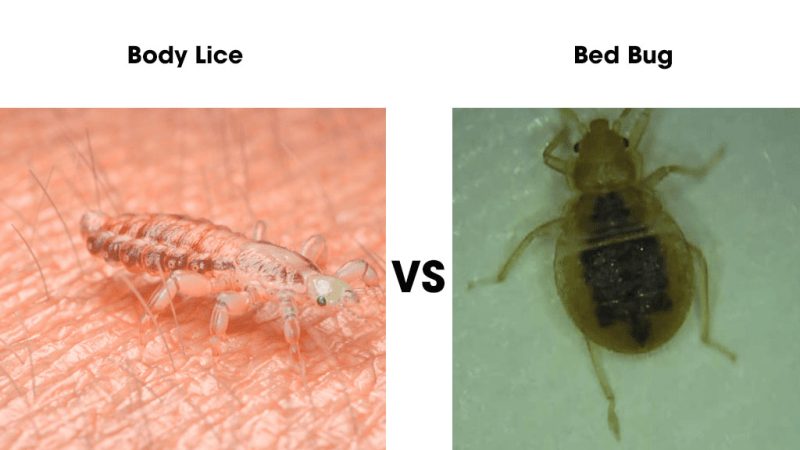
Characteristic |
Body Lice |
Cimex lectularius (Bed Bug) |
|---|---|---|
Size |
2 mm–4 mm |
1.5 mm – 6 mm |
Color |
Greyish/transparent, turns reddish-brown after drinking blood |
Reddish-brown to dark brown |
Habitat |
Lives within clothing, crawls onto skin to feed |
Near human sleeping areas |
Feeding Behavior |
Feeds on blood, lays eggs in clothing seams |
Parasitic, feeds on blood |
Life Cycle |
Egg – Nymph – Adult; eggs hatch in 6–9 days, nymphs turn into adults in about 7 days |
Egg – Nymph – Adult |
Wings |
Does not have wings |
Adults do not have wings |
Claws |
Has claws at the end of each leg to grip clothing |
Does not have claws |

